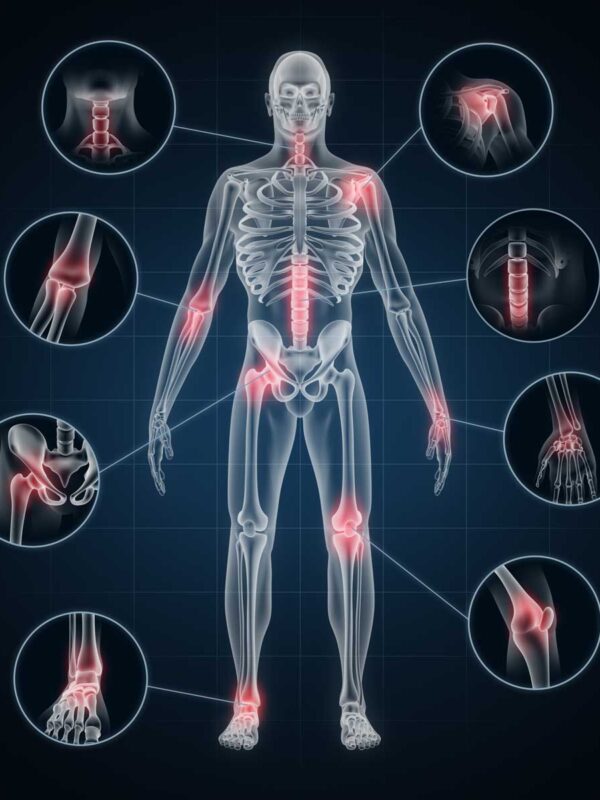Osteoarthritis is one of the most common forms of arthritis, affecting millions across the world, but if you’re dealing with this condition, it’s important to seek diagnosis and osteoarthritis treatment to help you reduce the pain, stiffness, and lack of mobility that comes with the condition.
At Arthritis & Osteoporosis Associates, we can effectively diagnose and treat your condition and help you manage it while maintaining a comfortable and mobile lifestyle.
What is Osteoarthritis?
Osteoarthritis is a condition that causes pain and discomfort due to a variety of factors. When the cartilage between the joints begins to deteriorate, it causes the bones to rub together, which results in inflammation, pain, and potential joint damage.
Cartilage is effectively a cushion for your joints, so when it begins to dissipate, it can cause friction between the bones which results in stiffness and decreased mobility.
What Causes Osteoarthritis?
There are a variety of factors that contribute to developing osteoarthritis. These factors often include:
- Aging- risks increase over the age of 50.
- Intense Physical Activity- physical activity, while healthy, can contribute to strains and injuries, which can lead to joints being overused and developing the condition.
- Weight- obesity can be a contributing factor as it adds stress to the joints, knees, and hips.
- Genetics- osteoarthritis can occur in the family which may increase your risk.
- Gender- the risk is higher in women, especially after menopause.
- Bone/Joint Deformities- if you’re born with malformed joints or bones, or even defective cartilage, this could increase your chance of osteoarthritis.
Getting Your Osteoarthritis Diagnosis
If you’re experiencing the symptoms of osteoarthritis, you’ll want an official diagnosis from your primary care professional or a rheumatologist. There are a few ways that a medical professional can diagnose osteoarthritis. These include:
- Physical Exam- a routine but thorough physical exam can help your doctor notice signs of joint tenderness, swell, instability, and reduced range of motion.
- Imaging- tests like x-rays and MRIs can offer a detailed look at cartilage loss, bone spurs, and even soft tissues.
- Lab Tests- a simple blood test and joint fluid analysis can help rule out your condition.
Osteoarthritis Treatment
When you get diagnosed with osteoarthritis, the next step is treatment. While everyone is different and respond to therapies and medications differently, there’s a few effective ways to administer your osteoarthritis treatment, including:
- Medication- pain relievers and NSAIDs can be effective at reducing discomfort and pain.
- Lifestyle Changes- losing weight, starting low-impact exercise, and instilling joint-protection techniques can help you maintain mobility.
- IV Injections- different acids and fluids can help alleviate the affected joints.
- Physical Therapy- moderate customized exercise plans and assistive devices can help support affected joints.
Seek Osteoarthritis Treatment Today
If you’re experiencing pain, discomfort, swelling, and a reduced range of motion, it’s important to seek out diagnosis and treatment to help reduce the pain and discomfort and maintain your physical abilities.
If you’re ready to seek diagnosis or osteoarthritis treatment, you can look to us at Arthritis & Osteoporosis Associates*. Our practioners can help you find relief!
*Always check with your primary care professional before seeking alternate treatment.
